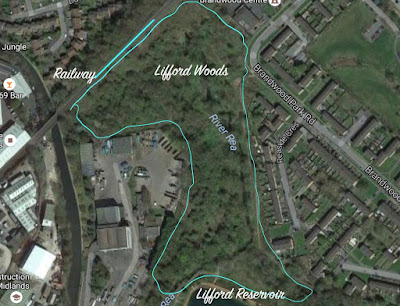NIA application and Management Proposal
Cannon Hill Park was originally opened to the public in 1873 and is made up of 80 acres of formal parkland and 120 acres of conservation area and woodland plantation. It is situated within the heart of Birmingham and runs along the River Rea corridor. The park itself is popularly used by the community for numerous activities such as walking, running, football, forest schools, seasonal fair-grounds, picnics and other recreational pass-times. Alongside this there are walks and cycle paths running further along the River Rea corridor aimed at catering for wildlife enthusiasts, those seeking exercise and people looking for a good day out. Cannon Hill Park has successfully achieved Green Flag status for the past 10 years which recognises the park as one of the best green spaces in the country.
Within the wilder areas of the park there is a need for some woodland management. A number of areas of plantation were created 20-30 years ago as part of various different planting schemes. These have been left mostly alone and could now benefit from being thinned out to create room for remaining trees to develop and also to encourage ground flora to thrive.
As part of a 2 year programme thinning will take place in the Queen Mother’s and RSPB plantation. The two plantations consists of Hornbeam, Field Maple, Hazel, Oak, Scott’s Pine, Ash, Silver Birch, Prunus sp., and Apples sp.. Approximately 30% of each plantation will be thinned. In the first year the densest areas will be targeted. There is very little ground flora in these sections and it will be possible to introduce a ground flora seed mix directly after thinning. It will be necessary to remove the dead leaf layer to expose the bare earth.
In the second year thinning will be more targeted in the remaining areas. The ground flora is grassier and will be removed using herbicide in summer 2014. Then, after completion of the tree thinning the ground flora seed mix can be introduced. Species such as Foxglove, Wood Millet, Primrose and Red Campion. There will also be opportunity to under-plant with native tree species in some area, such as where dense areas of Birch are thinned.
There is an existing perennial meadow in Cannon Hill Park that was created in 2010 following some building works. There is the potential to increase the species mix using hay strewing of patches. In 2014, a few small patches will be treated with herbicide and green hay from a donor site will be introduced. There is a smaller area, currently left un-mown, directly south of the existing meadow, adjacent to the Queen Mother’s plantation. The current species mix is quite poor. This area will also be treated with herbicide and green hay introduced. Yellow Rattle will be introduced on both meadow sites in 2014.
There is great scope for community involvement in this project. Wildlife Trust community and education staff will run 6 days of volunteering/training/school sessions in the first year of the project and potentially also in the second year. It is not clear exactly what will be the best use of the session until the consultation is complete. It is the aim to encourage people to come along and learn new skills in woodland and grassland management and to also learn about the biodiversity of the park and how they can help in the future.
The work as described above forms part of a wider plan to improve the River Rea corridor. There are other NIA projects taking place alongside the river, such as Rea meadows, and there is also potential to engage the local community through a number of events planned by the Birmingham City Rangers, the Friends of Cannon Hill Park and the Wildlife Trust.



Comments
Post a Comment